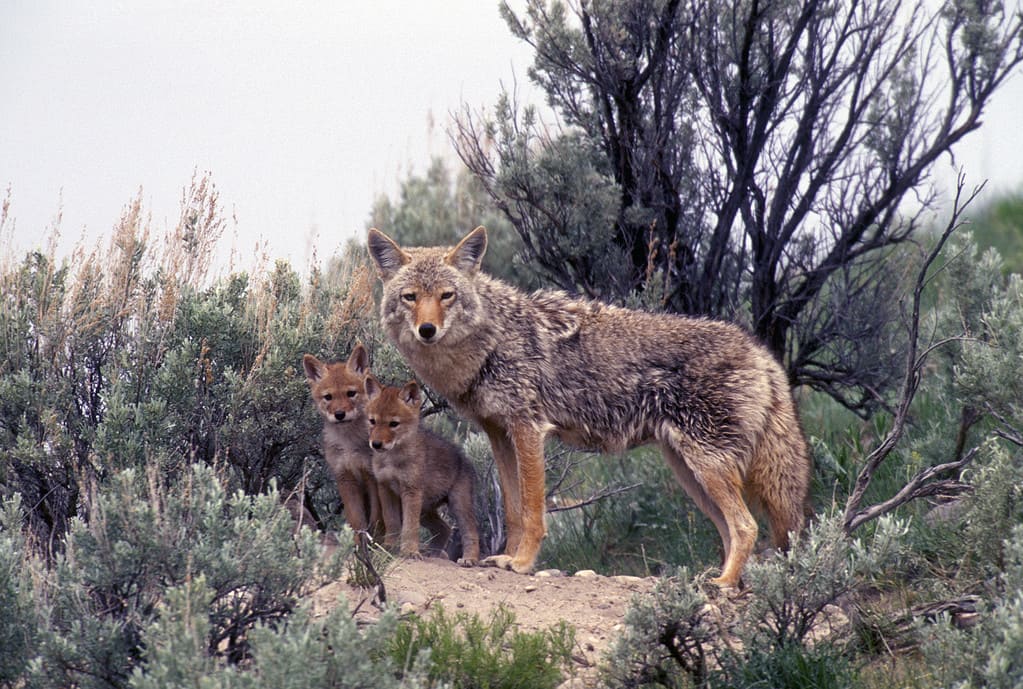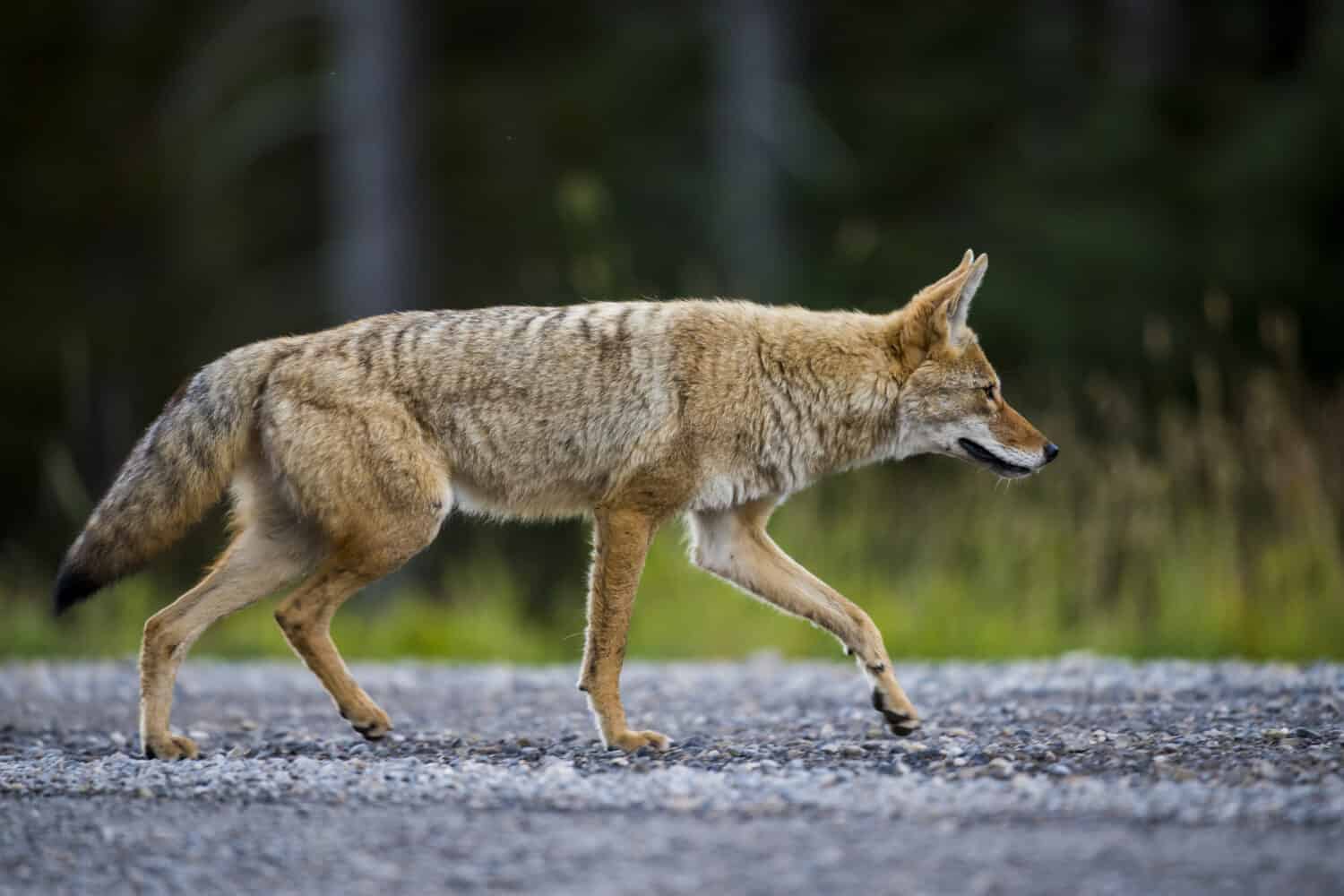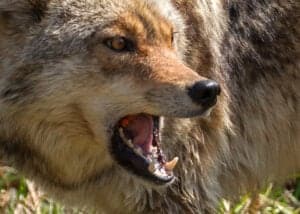Coyotes live in most of the United States, and although they may seem cute, they are actually dangerous. Today, we are going to look at when coyotes are most active or aggressive, plus the most likely situations to encounter them. Thankfully, we don’t have to be fearful, just cautious when dealing with coyotes, so let’s get started and learn more!
When Are Coyotes Most Active and Are They Dangerous?

Coyotes are usually active at night in areas heavily populated by humans.
©KenRinger/iStock via Getty Images
Generally, coyotes are more active at night, especially in urban areas where they try to avoid direct human interaction.
While they are most often seen at night, that doesn’t mean they are only seen at night. Coyotes can also be seen during the day, especially during the spring and summer months since they need to hunt and forage to feed new litters of pups. There isn’t a direct description for coyotes that totally fits their lifestyle, although diurnal or crepuscular is probably the closest in a natural environment. Truthfully, the location they are living is the biggest sign of what their habits will be. If it’s near regular human presence, they take on nocturnal habits.
Are Coyotes Dangerous?
Coyotes can be dangerous to humans, but it’s pretty rare overall. They almost always avoid humans and if there is an interaction, they will normally run away rather than attack. There are a few situations, however, that can make them more dangerous. Some coyotes may get a little too used to humans, particularly if they are fed by them (intentionally or unintentionally). This can lead to coyotes losing their natural fear of humans, and when they view humans as a food source without being afraid, well, it’s clear how it can be a problem. Additionally, coyotes follow the same rules that many other animals do; if they are cornered, sick, hurt, or rabid, the approach of a human will likely lead to an attack. In all of these scenarios, it’s a defensive measure, save for the rabid example. Rabid coyotes are extremely unpredictable and can be aggressive without being provoked.
When Are Coyotes Most Aggressive?

Generally, coyotes aren’t aggressive, but certain scenarios can increase risk.
©Randy G. Lubischer/Shutterstock.com
Coyotes are generally not aggressive toward humans, but during certain times of the year, and during certain scenarios, they can become aggressive.
Like many animals, coyotes can become aggressive during the mating season. Typically, they mate between late December and March. During the mating season, they can be a little more territorial and protective of their mates. This is most often reflected in their willingness to chase dogs since they can perceive them as a threat to their mates (while your dog is just looking for a play-mate).
After the mating season comes the birthing season. Coyotes give birth to their pups in April or May, and during this time, they may be more aggressive toward humans or pets. This is aggravated if a human or pet goes near their den or their pups.
The real outlier of all of this? Rabies. Rabies is a type of disease that affects the central nervous system of animals, and in coyotes, it can cause them to be extremely aggressive and bite, ultimately spreading the disease. They are one of the more well-known carriers of rabies, along with animals like raccoons. If a coyote has rabies, it doesn’t really matter what time of day it is, they could attack totally unprovoked. In fact, coyotes approaching humans is one of the major signs they have developed rabies.
How to Reduce Your Risk of Encountering Coyotes
While there are some things that cause coyotes to be more dangerous, we can usually avoid them. Here’s a little list to keep in mind if you live in a region that has coyotes:
- Don’t leave food out, and don’t intentionally feed them. This seems obvious, but doing things like sealing trash cans and making sure garbage has a proper place can help.
- Keep your pets indoors at night, and if you have to take them out, watch them carefully. Small dogs are especially prone to being the target of coyotes since they are viewed as prey. If you are walking your dog, make sure to use a leash.
- Never, ever try to engage or approach a coyote. If you run into one, don’t turn your back or run; simply slowly back away while making yourself seem large, loud, and imposing.
Additionally, if you notice a coyote acting strangely, shaking, drooling, or foaming at the mouth, these are all signs of rabies. Rabies can be spread to humans and dogs, so it’s important to immediately let the authorities know if a coyote is seen with these symptoms.
Thank you for reading! Have some feedback for us? Contact the AZ Animals editorial team.








